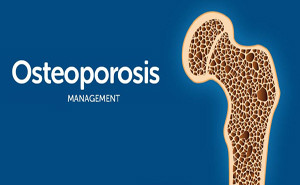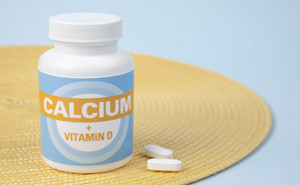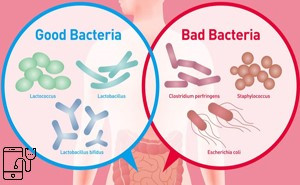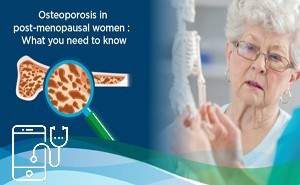Featured
Overview of OsteoporosisOsteoporosis is a disease
characterized by low bone mass and deterioration of bone tissue and bone
structure, which can lead to increased bone fragility and risk of fracture. The most common fractures associated
with osteoporosis are in the hip, spine, wrist, and shoulder.
Osteoporosis is the major cause
o...
The role of CalciumCalcium is a
key structural component of bone and is built into bone as a mineral complex
that includes calcium and phosphate. Calcium is a major building-block of bone
– the skeleton houses 99% of the body’s calcium stores. The calcium
in bones also acts as a reservoir for maintaining calcium levels in the blood,
which is n...
Vitamin D is
known for its role in calcium homeostasis for optimal skeletal health. It was
previously believed that only elderly or hospitalized patients were at risk for
vitamin D insufficiency, but many people in the general population have
insufficient levels of Vitamin D (25-hydroxyvitamin D or in short, 25[OH]D).We review the
role of vita...
Cefuroxime is the 2nd
generation cephalosporin group of broad-spectrum β-lactam antibiotic. Clavulanic acid is
naturally occurring potent inhibitor of β-lactamase. It is a “suicidal
inhibitor” of β-lactamases produced by a wide range of Gram positive and Gram
negative micro-organisms.β-lactamase mediated resistance is the most common mechanism...
Probiotics contain
microorganisms, most of which are bacteria similar to the beneficial bacteria
that occur naturally in the human gut. Probiotics have an important role in the
maintenance of immunologic equilibrium in the gastrointestinal tract through
the direct interaction with immune cells.
Probiotics are safe for infants,
children,...
Probiotics are living non-pathogenic microorganisms, which
when given in sufficient amounts should be
beneficial to host by improving its microbial balance in gut and participate in
the metabolism.Probiotics uses are common and recommended in different text books.Find out below beneficial effects of probiotics and what are covered in Medical Te...
Probiotics are live microorganisms that, when administered in adequate
amounts confer a health benefit on the host. RemoveAvailable BrandCurrent insights into the clinical applications for various
probiotics in gastroenterology are summarized below:
An Endocrine Society Guideline UpdateWhat Is the Definition of
Postmenopausal Osteoporosis?Osteoporosis is defined as “a [silent] skeletal disorder characterized by
compromised bone strength predisposing to an increased risk of fracture. Bone
strength reflects the integration of two main features: bone density and bone
quality” RemoveAvailable...
Esomeprazole is the S-isomer of
Omeprazole and reduces gastric acid secretion through a specific targeted
mechanism of action. It is a specific inhibitor of the acid pump in the
parietal cell. Esomeprazole works better to lower acidity in the gut and
improve symptoms of GERD compared to omeprazole. How?Find out below: RemoveAvailable Brand
Cefuroxime is the 2nd
generation cephalosporin group of broad-spectrum β-lactam antibiotic. And Clavulanic
acid is a beta lactamase inhibitor used to enhance the effectiveness
of beta lactam antibiotics.CEFUROXIME- CLAVULANATE is
indicated for the treatment of patients with mild to moderate infections caused
by susceptible strains of the desig...
Key Points about Vitamin D
Deficiency and Dependency
Vitamin D deficiency is common
and results from inadequate exposure to sunlight and inadequate dietary
intake (usually occurring together) and/or from chronic kidney disease.
The deficiency can cause muscle
aches and weakness, bone pain, and osteomalacia....
Therapeutic indicationsAmoxicillin, alone or in
combination with clavulanic acid, still accounts among the most widely used
antibacterial agents. Although they are often considered 'twin drugs', they are
different both in terms of antibacterial activities and of safety profile.Amoxicillin/clavulanate potassium
is indicated in the treatment of i...













